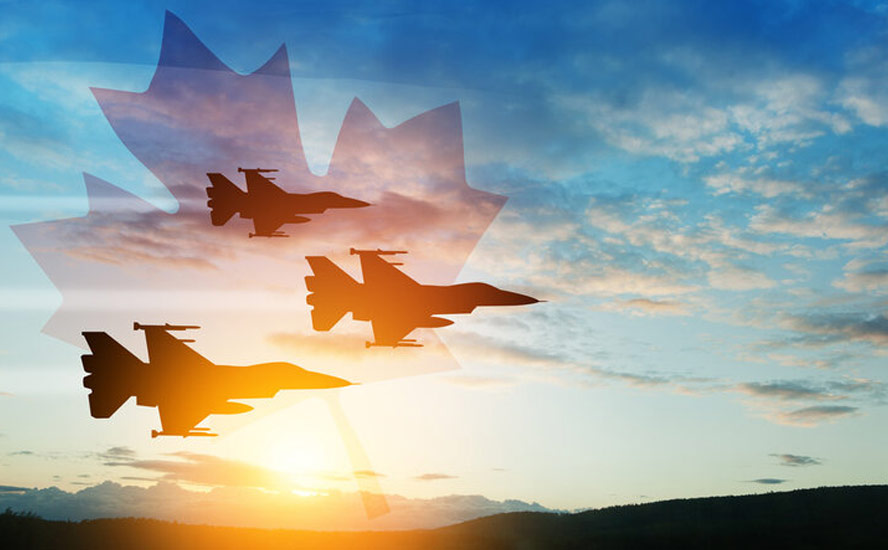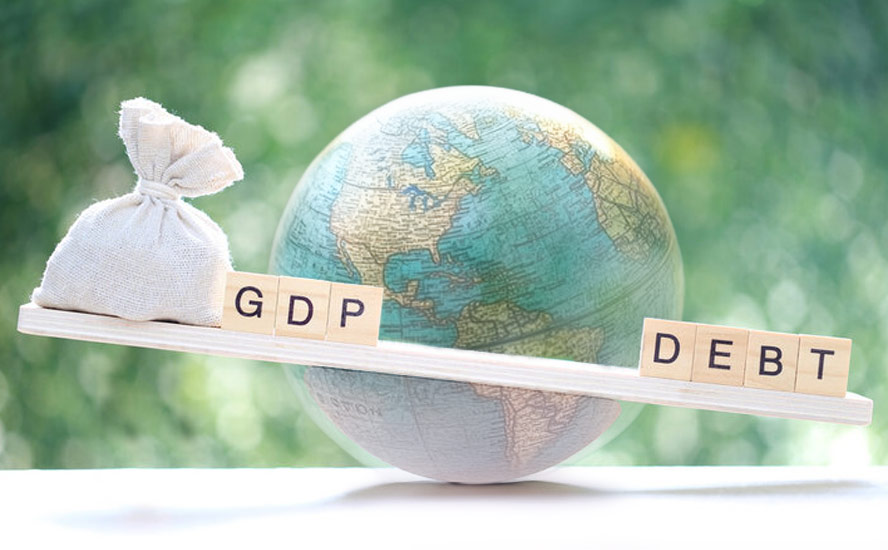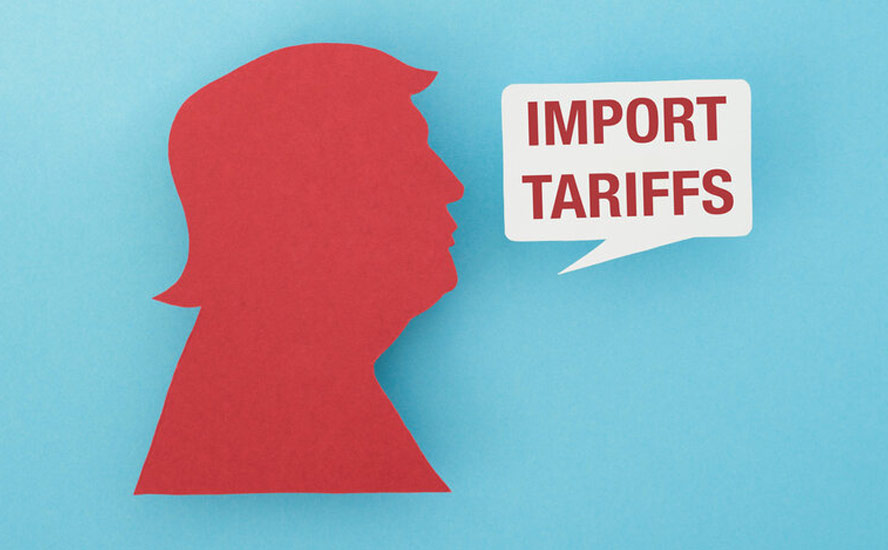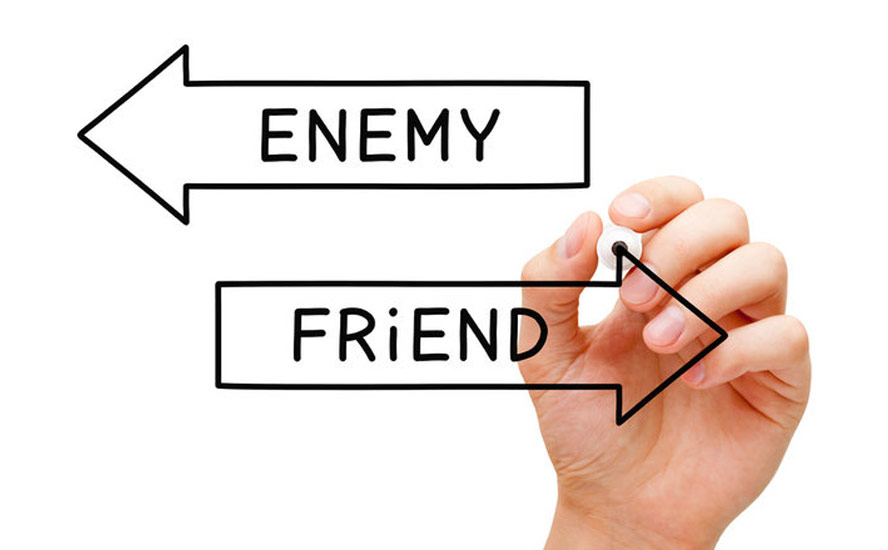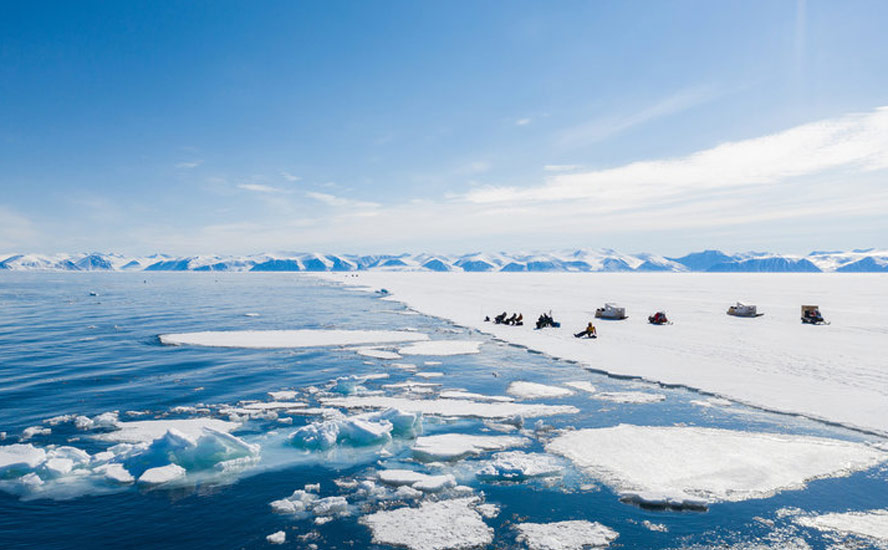Communist countries coalescing

2019.05.02
On January 29, 2017, a young man walked into a Quebec City mosque and shot six men dead. The pure evil of the act, discharging a firearm with the intent to kill in a place of worship, was compounded by the fact that 27-year-old Alexandre Bissonette was clearly motivated by hate.

Carrying a .223-caliber rifle and a 9-mm Glock pistol, Bissonette was apparently carrying 108 bullets when he entered the Islamic cultural center and fired into a crowded prayer room.
Upon being sentenced to at least 40 years in prison, a Quebec Superior Court Justice described his actions as “premeditated, gratuitous and abject” and an “unspeakable tragedy that tore apart our social fabric.”
Hate crimes have spiked since 2017. According to recent data from Statistics Canada, in 2017 there were 2,073 such incidents reported to police. The numbers have been rising steadily since 2014, when there were 1,294, 1,362 in 2015 and 1,409 in 2016. Most of the crimes were committed against followers of Judaism and Islam, said the Vancouver Sun.

Things didn’t get any better in 2018. An Angus Reid opinion poll quoted by the Sun showed 88% of respondents found prejudice between different racial groups or nationalities to be a cause for concern. Hate crimes in the United States also rose in 2017 for the third consecutive year.
Last weekend the Globe and Mail carried a feature article about the rise of white nationalism in Canada:
The Globe and Mail has obtained a trove of 150,000 messages posted between February, 2017, and early 2018 that reveal the private communications of a loosely aligned node of Canadian right-wing extremists. The record of their continuing conversations reveals a movement, energized by the rise of white ethno-nationalism in the United States, that aims to upend a decades-old multicultural consensus in this country.
The white nationalists known as the Canadian Super Players disguised themselves as members of a gaming chat room. There are only 180 members currently but they are doing more than just talking online, according to two freelance journalists who wrote the article:
They meet in person, spread propaganda and encourage each other to recruit and expand the movement. They purchase weapons and discuss training. They have also attempted to join, influence and volunteer for Canadian political parties, usually adopting a restrained and more palatable guise.
Of course, the rise of the far right in Canada is just echoing what we are seeing in the United States and around the world, as the decades-old consensus over multiculturalism and globalization is torn asunder. US President Donald Trump was heavily scorned for failing to denounce the white nationalists whose 2017 rally in Charlottesville, North Carolina left one woman dead. Trump famously stated there was “blame on both sides”.
The attack earlier this year on mosques in Christchurch, New Zealand, shows that white nationalism isn’t confined to North America. The gunman shot 50 people to death in a terrifying act of violence, then callously streamed the attack on Facebook. The social media giant has been criticized for failing to sensor fake news. It has since banned former Toronto mayoral candidate, and alt-right personality Faith Goldy, and Canadian white-nationalist campaigner Kevin Goudreau, for promoting organized hate.

Meanwhile a US Army veteran was reportedly charged with planning to detonate a nail bomb at a white power gathering in Los Angeles. The 26-year-old US Army infantryman who had converted to Islam, was arrested in an FBI sting operation. A shooting at a synagogue near San Diego last weekend that resulted in one person dead and three injured, is being considered a hate crime. The 19-year-old shooter was reportedly inspired by the Christchurch killings.
What does this orgy of race-fueled violence have to do with communism? It is the starkest example of the divisions the West is experiencing – cleavages that are weakening the status quo and allowing our enemies to meet, develop relationships, and strategize ways to gain power at the expense of the United States and Western Europe. It is working.
At Ahead of the Herd, we are following the decline of American (as well as European) hegemony and are noticing that communist, strong-arm dictatorships are coalescing, to take advantage of the cracks that are appearing in the established world order.
In this ongoing clash between West and East, we wonder what is the best way to safeguard one’s wealth, and the only answer we can come up with, is gold.
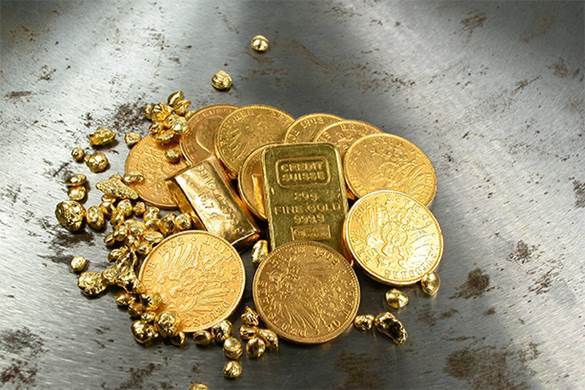
Breakdown
The election of Donald Trump in 2016 on a nativist, populist platform that pointed the finger at Mexican “illegals”, and then upon inauguration, banned entry of citizens from certain Muslim countries, was the froth on a cresting wave of anti-globalist, anti-immigrant sentiment that has been building momentum over the past several years.
We went against the grain in 2018 by arguing that it wasn’t a small rump of disenchanted Republican racists and fundamentalist Christians that put Trump in the White House (a lot of mainstream men and women voted for him too) however race played a significant part, uncomfortable as that may seem to many.
Pundits have pointed to an ugly racist undercurrent that many voters agreed with Trump on, as the reason that propelled him into power against a seemingly experienced and capable, though highly mistrusted opponent. While this is hard to prove, there is evidence to support the success of this strategy to exploit racial intolerance.
Newsweek quoted an exit poll that showed the biggest issue for Trump voters was immigration, not foreign policy, the economy or terrorism, with 84% saying the government should deport undocumented migrants.
Analysts say Trump’s success among white voters is partly attributable to his tapping into concerns about immigration and a feeling among many voters that the U.S. should be a white, Christian country. – Newsweek
White nationalism is intimately tied with religion. The Newsweek article quotes a poll of 4,000 Americans which found that “43 percent of respondents thought that the abundant natural resources in the U.S. were a sign that God wanted America to lead the rest of the world. Sixty percent of those surveyed believed that the U.S. holds a special place in God’s plan.”
Other concepts that Trump espoused which resonated with white Americans included the idea that Muslims and illegal immigrants were a threat (“They’re bringing drugs. They’re bringing crime. They’re rapists”) and a growing frustration among some people of having a black president for two terms, emboldening African-Americans through the rise of “Black Lives Matter”, for example.
“There is a feeling in the U.S. that there has been an excess of liberalism,” Newsweek quoted an associate professor of political science at the University of California, Irvine. “People want to take back what was rightfully theirs and for some that includes taking back the color of the presidency.”
For more read our Nationalism, not the Russians, got Trump elected
Far-right parties are changing the European political landscape. In Europe much of the discontentment, and fuel for the right, is directed towards migrants, mostly from war-torn Syria but also Iraq, Afghanistan, Lebanon and African countries. Europeans feel their countries are being changed, and their national identities diluted by global forces beyond their control, without their consent, and they don’t like it.
Then there is the theme that several countries in Europe, as well as the United States, are fed up with globalism and want to return to the idea of the “nation-state” where the right to national self-determination is fundamental.
Trump’s contempt for the UN and other multilateral bodies is an example of this, as was the pro-Brexit movement in the UK which argued that remaining in the European Union was not in Britain’s best interest.
“What we are seeing is the rise of the nation-state against the will of multinational organizations and agreements. There are serious questions about membership in the EU, NATO and trade agreements, and equally about the right to control borders… We are seeing a return to nationalism in Europe and the United States because it is not clear to many that internationalism, as followed since World War II, benefits them any longer.” George Friedman, ‘Nationalism is Rising not Fascism’
To this it should be noted that nationalism particularly in Europe has for decades been seen as a dirty word, since it was “national socialism” in Italy and Germany that gave rise to Hitler and Mussolini. The birth of the European Economic Community through the Treaty of Rome in 1957 was primarily to bury the idea of nationalism in Europe. Its earlier incarnation, the Treaty of Paris of 1951, created the European Coal and Steel Community, whose aim was to pool French and German steel production in order to strengthen Franco-German cooperation and banish the possibility of war.
As the European Community evolved into the European Union, European elites stood by a common vision of “the European” whose characteristics included a preference for free trade, open borders, and so-called progressive ideas like same-sex marriage. Now that is all being questioned.
For more than a generation, the Western elites settled into a consensus on most major issues—from the benefits of free trade and immigration to the need for marriage equality. Their uniformity on these basic questions consigned dissenters to the political fringe—further aggravating the sense of grievance that now threatens the mainstream. That is what helped Farage, Le Pen and other European populists find an audience in 2016. They wanted Europe to be a mosaic of states instead of an integrated commonwealth with a shared currency and open borders. They wanted, in short, for Europe to look more like it did before the E.U.’s grand experiment, never mind that this experiment was designed to prevent the nations of Europe from engaging in an endless cycle of wars. – Simon Shuster, Time Magazine
The Independent ran a series of charts that showed the results of the 2016 Brexit referendum which has seriously infiltrated, and not in a good way, Britain’s politics. Three years on, the country still can’t figure out how to leave the EU. One of the charts by Ashcroft Polls, shows that Britain was voted out of the European Union by those who felt most strongly disliked (in order), multiculturalism, social liberalism, immigration, environmentalism, feminism, the Internet, globalization and capitalism.
Differences among people’s race and national identity is not the only disruptor in the West. Economics is the other important factor that fuels angry mobs. In the United States, Trump’s “make America great again” message was directed at America’s underclass, those left behind in the rising tide of globalization that was supposed to lift all boats. It resonated among people in the poorest cities of the US where wages have fallen and jobs were lost to foreign takeovers or American companies that shifted production abroad.
During the Brexit referendum, much of industrialized northern England voted to kick the bums out of Brussels. No matter that it was actually UK government policy that killed British industrial towns, argued The Guardian columnist Ian Jack, the damage had been done. The warning was the Scottish referendum in 2014. Although a majority of Scots voted to stay with Britain, Jack notes that four of 32 voting areas that voted “Yes” to independence, “bore the scars of vanquished industries” like fishing.
In France, the “Yellow Vest” movement continues to agitate on behalf of the country’s poor they believe have been ignored by the Macron government. Many raised eyebrows at the billions pledged by French billionaires, companies and ordinary citizens soon after the Notre Dame cathedral was damaged in a fire, money that could have gone to help France’s less fortunate.
Communists unite!
Amid all these political and economic cleavages that have divided the West, America’s current and former enemies are rushing to take advantage.
As the nation twists its knickers over the findings of the Mueller report and whether Congress will impeach the president, Russia and China are drawing closer.
Last Friday a group of 36 national leaders gathered at a Belt and Road Summit in Beijing.
“Belt and Road” is the term for an ambitious trade corridor first proposed by the Chinese regime under its current president, Xi Jinping, in 2013. The grand design also known, confusingly, as the Belt and Road Initiative (BRI), is a “belt” of overland corridors and a “road” of shipping lanes.
It consists of a vast network of railways, pipelines, highways and ports that would extend west through the mountainous former Soviet republics and south to Pakistan, India and southeast Asia.
So far over 60 countries, containing two-thirds of the world’s population, have either signed onto BRI or say they intend to do so. Click here for a list of the countries
According to the Center for Foreign Relations, the Chinese government has already spent about $200 billion on the growing list of mega-projects projects including the $68 billion China-Pakistan Economic Corridor. Morgan Stanley predicts China’s expenditures on BRI could climb as high as $1.3 trillion by 2027.
The Belt and Road Initiative is seen by proponents as an economic driver of proportions never seen before in human history. It would not only allow Asia to relieve its “infrastructure bottleneck” ie. an $800 billion annual shortfall on infrastructure spending, but bring less-developed neighboring nations into the modern world by providing a growing market of 1.38 billion Chinese consumers.
Opponents argue that is naive and the real intent of BRI is to carve new Chinese spheres of influence in Asia that will replace the United States, in-debt poor nations to China for decades, and restore China to its former imperial glory.
Of interest was the guest of honor at this year’s conference: none other than Russia’s Vladimir Putin. Addressing the assembled delegates, Putin told them,
“It’s important to create an effective answer to the risk of fragmentation of the global economic, political and technological space.” The remark was clearly aimed at the United States. Ironically, the two leaders of former command economies are now defending free trade and calling themselves the guardians of capitalism against the protectionist policies of the Trump administration.
The Globe and Mail’s Asian correspondent, Nathan Vanderklippe, sums up the Putin-Xi rapprochement nicely:
The veiled shot at Washington from Chinese soil marked the latest indication that Russia and China, despite their many differences, have found increasingly common cause at a moment of U.S. disengagement with some of the institutions of global leadership. While China seeks an end to the tariffs imposed by the United States on US$250-billion of its goods, Russia has sought relief from international sanctions.
More importantly, however, “Russia and China share their vision of how the world should work – that it should be multipolar, countries should be equal and the world should not be dominated by one power,” said Alexander Lukin, the author of ‘China and Russia: The New Rapprochement’ and head of the Faculty of World Economy and International Affairs at Moscow’s National Research University Higher School of Economics.
Concrete examples of Russian-Chinese cooperation include: the involvement of 3,200 Chinese troops in Russian military exercises last September – the largest exercises since the end of the Cold War; a visit to Moscow from China’s defense minister; and firmer economic ties.
The Globe notes that trade between Russia and China rose 24.5% last year to $108 billion. Russia has been the top oil supplier to China since 2016. Last year the two nations signed natural gas contracts equivalent to a third of Chinese NG imports. Novatek, a Russian gas producer, just sold a 20% stake in Arctic LNG 2, a $25.5 billion project aiming to ship LNG in 2023, to two Chinese firms.
Belt and Road will likely increase and strengthen these connections. At last week’s conference Putin reportedly approved a toll road connecting Belarus to Kazakhstan.
According to The National Interest, while not much should be made of announcements like that (the two government haggled over it for six years and the road won’t open until 2024), “Beijing and Moscow share one very big objective: resist U.S. dominance.”
Among the chief complaints, by Russia and China, of US interference in their spheres of influence, writes Doug Bandow, a senior fellow at The Cato Institute, are America’s navy patrols in the Asia-Pacific, and the expansion of NATO to Russia’s borders. The fact that US policy gets deployed against Russia and China’s friends, like North Korea, Cuba, Serbia and Syria, is another big bone of contention, along with the US push for regime changes in Georgia and Ukraine:
More broadly, both Russia and China oppose America’s use of its economic power to browbeat the two nations. There are direct U.S. penalties, for instance restricting Russian access to sophisticated oil technology. Worse is Washington’s use of secondary sanctions, which punishes anyone anywhere if they deal with the targeted nations. Hence the recent U.S. directive that Beijing must end imports of Iranian oil. Thus, Washington has done much to bring its two leading adversaries together.
Other commentators make the point that Russia and China have a shared interest in keeping the US out of central Asia which is strategically important and rich in natural resources – Kazakhstan for example is the world’s second largest repository of uranium, behind Australia.
Here’s Turkey-based TRT World:
Central Asia contains relatively weak states with small populations, but significant energy reserves and strategically located between China and Russia. Their shared interest in regional stability and in keeping US influence out of the area has led the two countries to develop a largely cooperative attitude towards one another. Both China and Russia have economic and security interests in the region, which might challenge US interests and its increasingly unilateral power order.
Jingdong Yuan, associate professor at the University of Sydney Centre for International Security Studies, thinks Russian-Chinese cooperation through Belt and Road is a natural extension of a longstanding relationship:
China and Russia have formed a strategic partnership since the mid-1990s. Driven their shared interest in opposing what they characterize as power politics and US hegemony, Beijing and Moscow have formed a united front on many important issues such as global governance and the respect for sovereignty and pledged support to each other’s diplomatic initiatives. They have also benefited from close cooperation in the areas of arms trade and military technology transfers, anti-terrorism, energy development, and stability in Central Asia through the Shanghai Cooperation Organization (SCO). This partnership appears to have been further strengthened by the particular personalbond between Presidents Putin and Xi over the past years.
More cynically though, think about it this way: China ropes in 60-odd (mostly) weaker nations by providing loans in yuan, thereby increasing demand for its currency at the expense of the US dollar. Those countries then become indebted to China, which buys their resources and manufactures goods in China, then sells those goods back to the nations that provided the raw materials. (sound familiar? It’s no different from Canada selling its raw materials to the US). As we have written, China has no reason to come to its neighbors’ aid with multi-billion-dollar infrastructure loans other than to gain economic and political influence over them.
Sure, there may be some projects where it’s a win-win, but it appears the deck is way stacked against BRI host nations where the outcome will almost certainly leave China the clear winner.
This new communist love-fest isn’t limited to Russia and China. We are seeing more and more connections developing between them and North Korea.
The reason is mostly economic. With North Korea under the thumb of UN sanctions, it needs to revive its moribund economy. One way to do this is for North Korea to join China’s BRI. CNBC reports that the nuclear-armed nation is seeking around $7 billion in infrastructure investments like railways and ports. Being Pyongyang’s largest trading partner, it would only make sense – although allowing North Korea to join would be problematic, perception-wise. However Beijing can support the reclusive dictatorship in other ways. South China Morning Post outlines three ways it might do that: strengthening agricultural ties, acquiring fishing rights, and enhancing tourism.
That’s the legal trade, but there is also evidence of sanctions-busting going on between the DPRK and Russia. Sixteen months ago, when the UN slapped sanctions on North Korea to try to stop its nuclear missile testing, the Security Council limited its oil imports and banned coal exports – a major source of government revenue.
However according to a March UN Security Council report, the North has fraudulently been registering ships under foreign flags “and engaging in illegal ship-to-ship (STS) oil and coal transfers,” Forbes reported.
Russia and North Korea are also cozying up. Putin and Kim Jong-un recently met for the first-ever summit in Russia to discuss denuclearization.
“Last week’s summit with Putin allowed Kim to show stature internationally and discuss alternatives to the U.S.-proposed big deal on denuclearization. But he failed to win Russian support for weakening the international sanctions regime. For Putin, the summit provided an opportunity to emphasize Russia’s relevance in Korean peace and denuclearization negotiations, which have so far been dominated by the United States and South Korea,” explained the Council of Foreign Relations.
More pragmatically, the two communist nations have reportedly talked about building a second bridge, beyond the one crossing known as the “Friendship Bridge” that opened in 1959 and offers a basic rail connection across the border.
Conclusion: Own gold
The strengthening of political, military and economic ties between Russia, China and North Korea is concerning. Not only is it reminiscent of the Cold War arms buildup that occurred behind the Iron Curtain from 1957 to 1989, it is also a direct threat to the US-led international order that favors democracy and free trade.
The United States under Trump has turned inward, against the market economy, giving Russia and China a reason to unite against US protectionism. In the 1950s it was the mighty Soviet Union that established a trading network with its vassal states that bordered the empire. Today Russia is too weak to do that, so the role is being assumed by China. Russia is already a member of BRI and it needs to be part of China’s growing trading block in order to counter US sanctions and have a ready and willing market for its main exports, oil and gas. It’s an ingenious plan: Use Belt and Road multilateralism to give the appearance of Russia just being one of 60 BRI nations, when the real strategy is to form a Chinese-Russian axis that can subvert US influence in the region, while assembling a trading block of resource-rich countries that will soon be at China’s beck and call.
What does all this mean for the North American economy? It means we can no longer take the US dollar for granted as the reserve currency. The greenback has, since the 1970s, been the fiat currency to own, since most international transactions are settled in USD and commodities are sold in dollars.
This is beginning to change – the move away from the dollar being led by China and Russia.
Russia is actively seeking to reduce its dependence on the greenback in an effort to skirt US sanctions for, among other things, interfering in the US presidential election and invading Crimea. The Kremlin stopped buying foreign currency in September 2018 to prevent the ruble from crashing due to sanctions. Instead the Russian Central Bank turned to gold, buying a record 274.3 tonnes in 2018, according to BNE Intellinews, while selling a whack of US Treasuries – bringing its share of the US dollar as a foreign reserve down from 43.7% to 20%.
Between March and May of last year, Russia sold off 84% of its US debt holdings, leaving just $14.9 billion in its US reserve account.
In 2017 Xi Jinping and Vladimir Putin met in Russia to sign a deal whereby two Russian banks and a Chinese bank created a $10-billion investment fund that will finance infrastructure and development projects, and an $850 million innovation fund. The Russian banks are subject to US sanctions so the deal allows Russia to access non-Western capital, and to conduct transactions in yuan or rubles.
The two countries are also developing an inter-governmental agreement, to conduct commerce in yuan or rubles, thereby shutting out the dollar. They hope to double the amount of trade between them in the next six years.
We don’t see these moves away from the USD as temporary. We think that, no matter who becomes the 46th president in 2020, the US dollar is probably done as the reserve currency. We don’t know what will replace it, probably special drawing rights (SDRs) or a basket of currencies, but we do know that owning gold will protect a portion of your wealth, should a currency collapse occur.
Gold gives all of us something that fiat currencies (paper money), or any other financial innovation, cannot deliver. Gold is insurance, irreplaceable in its functions.
Putting at least 10% of your investment portfolio into gold is protection against black-swan events, like a reserve currency meltdown, that Sam and Suzy investor will not see coming. Can’t say I didn’t warn ya.
Richard (Rick) Mills
Ahead of the Herd Twitter
Ahead of the Herd FaceBook
Legal Notice / Disclaimer
This document is not and should not be construed as an offer to sell or the solicitation of an offer to purchase or subscribe for any investment. Richard Mills has based this document on information obtained from sources he believes to be reliable but which has not been independently verified. Richard Mills makes no guarantee, representation or warranty and accepts no responsibility or liability as to its accuracy or completeness. Expressions of opinion are those of Richard Mills only and are subject to change without notice. Richard Mills assumes no warranty, liability or guarantee for the current relevance, correctness or completeness of any information provided within this Report and will not be held liable for the consequence of reliance upon any opinion or statement contained herein or any omission. Furthermore, I, Richard Mills, assume no liability for any direct or indirect loss or damage or, in particular, for lost profit, which you may incur as a result of the use and existence of the information provided within this Report.
Legal Notice / Disclaimer
Ahead of the Herd newsletter, aheadoftheherd.com, hereafter known as AOTH.Please read the entire Disclaimer carefully before you use this website or read the newsletter. If you do not agree to all the AOTH/Richard Mills Disclaimer, do not access/read this website/newsletter/article, or any of its pages. By reading/using this AOTH/Richard Mills website/newsletter/article, and whether you actually read this Disclaimer, you are deemed to have accepted it.





